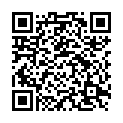|
|
|
| Module code: E2409 |
|
|
1V+1U (2 hours per week) |
|
2 |
| Semester: 4 |
| Mandatory course: yes |
Language of instruction:
German |
Assessment:
Written exam
[updated 08.01.2020]
|
E2409 (P212-0012) Electrical Engineering and Information Technology, Bachelor, ASPO 01.10.2018
, semester 4, mandatory course, technical
|
30 class hours (= 22.5 clock hours) over a 15-week period.
The total student study time is 60 hours (equivalent to 2 ECTS credits).
There are therefore 37.5 hours available for class preparation and follow-up work and exam preparation.
|
Recommended prerequisites (modules):
None.
|
Recommended as prerequisite for:
|
Module coordinator:
Dr. Julia Frisch |
Lecturer:
Miriam Wedig, M.A. (lecture)
[updated 18.07.2019]
|
Learning outcomes:
The three English modules are to be seen in conjunction with one another. They provide students with a framework in which to develop their job-related English language skills from the entry level B1 to level B2. This module focuses on written business correspondence, as well as job applications. After successfully completing this module, students will be able to communicate with international business partners by e-mail or letter. They will be familiar with the typical structure of the above, be sensitive to different registers and can apply these adequately. In addition, they will have a command of numbers and technical specifications in writing. Students will be able to describe various professional fields that are suitable for them as graduates of the Bachelor´s program. They will be able to write their own profile and apply as an engineer for a job advertisement written in English at an international company. They will be able to prepare application documents, i.e. CV and cover letter, and apply interview strategies. Cultural differences will also be taken into account.
[updated 08.01.2020]
|
Module content:
I. Business correspondence Typical documents from the field of business Reading and writing business letters from the resp. professional field Reading and writing e-mails Distinction between formal and informal business language II. Job applications Description of typical occupational fields in the energy supply and renewable energy sector Describing your own profile, including your professional background, technical knowledge and skills, soft skills Reading job advertisements Writing an application letter Writing a CV Preparing and training for an interview In addition: - Vocabulary - Repetition of the relevant grammatical structures
[updated 08.01.2020]
|
Teaching methods/Media:
Teaching and learning materials (print, audio, video), multimedia teaching and learning software for specific target groups
[updated 08.01.2020]
|
Recommended or required reading:
[still undocumented]
|


